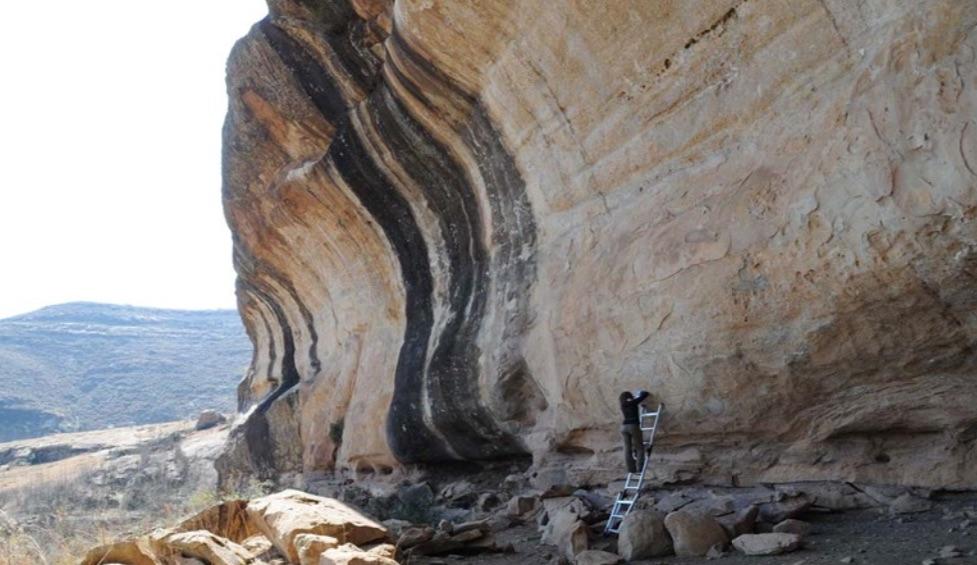
The Northern Branch’s Annual Symposium brings academics, society members, and their friends together once a year for a series of fascinating lectures.
Archaeologists constantly aim to place discoveries within a broader historical framework to get a sense of the time period that an object comes from and how it relates to other finds, times, and places in the archaeological record. This helps to build a better picture of how humans lived in the past, as well as how humanity, culture, and societies evolved over time.
Archaeologists use a variety of scientific methods to analyse the age and origins of fossils, and other-material remains from the past. Dating methods can enable bio-archaeologists to determine factors such as environment, diet, health, or migration patterns of humans, plants, or animals. Knowing the age of an object of material culture, how it was made, and the surrounds in which it was found, helps archaeologists to form hypotheses about the purpose for which the object was made and the cultural meanings that might have been attributed to it in the past. Ordering archaeological finds within time periods across traditions is how archaeologists piece together the past that connects all contemporary cultures today.
Join us at the ArchSoc Symposium to hear at first-hand the fascinating stories that Professors Dominic Stratford and David Pearce have to tell on how recent developments in dating techniques have opened new avenues of research at the Sterkfontein Cave Complex and in San rock art.
Saturday, 19 November 2022
Talk 1 – Dating the Sterkfontein Cave deposits by Professor Dominic Stratford
The palaeocave deposits found at the Sterkfontein Caves document landscape, environmental and faunal evolution spanning the last four million years. The deposits are most famous for yielding hundreds of hominin fossils and assemblages of some of the earliest stone tool technologies found in Southern Africa – discoveries that have contributed enormously to the sparse record of our early morphological and technological evolution. Fundamentally, we need to be able to date the fossils and stone tools to allow us to compare them to other sites in South Africa and the other major palaeoanthropological sites in East Africa in order that we can understand the timing and context of our evolution. In this talk Professor Dominic Stratford will discuss the traditional and contemporary methods used to date the fossils and stone tools at Sterkfontein, and present some of the most recent efforts to refine this important record.
Dominic has spent the last 15 years researching Sterkfontein’s rich fossil, artefact, and sedimentary record. His postgraduate research focused on integrating multiple forms of evidence to better understand the stratigraphy and formation process of the deep underground cave deposits that are notoriously complex and challenging to date. Dominic’s research applies to a range of earth science methods to help contextualise the palaeoanthropological assemblages. As the Director of Research at Sterkfontein, Dominic coordinates a field and laboratory program that involves a diverse team of scientists and students applying traditional and contemporary analyses to Sterkfontein’s rich assemblages.
Talk 2 – Dating Rock Art by Professor David Pearce
Rock art, internationally, has proved difficult to directly date, both because of its physical nature and the context in which it occurs. Changing technologies are allowing more rock art in more places to be dates. Southern Africa is no exception, and over the past decade we have made major advances in directly dating our rock paintings. This talk will describe the technical advances that have been made as well as some of the results that have been achieved.
Professor David Pearce is based in the Rock Art Research Institute, School of Geography, Archaeology and Environmental Studies at Wits University. His primary research interest is in cognitive archaeology, specializing in southern African hunter-gatherers. He has been running a multi-institutional research project on Later Stone Age rock art and related archaeology in the Eastern Cape province for several years. David also leads an international project developing techniques to date rock paintings.
- Date: 19 November 09h30-13h00
- Venue: Delta Environmental Centre, Delta Park, Road No. 3, Victory Park, Johannesburg. Secure parking at the Centre.
- Catering: Bring your own picnic lunch and refreshing drinks to enjoy with the other participants at the tables outside the Environmental Centre or on the lawns. A glass of fruit juice is available upon registration, and tea and coffee will be served at mid-morning.
- Book Table: A wide selection of new and second-hand books will be available for purchasing before the symposium starts and during the morning tea break and at the end of the symposium.
- Download the registration form below and return to anner@mweb.co.za
Disclaimer: Any views expressed by individuals and organisations are their own and do not in any way represent the views of The Heritage Portal.
